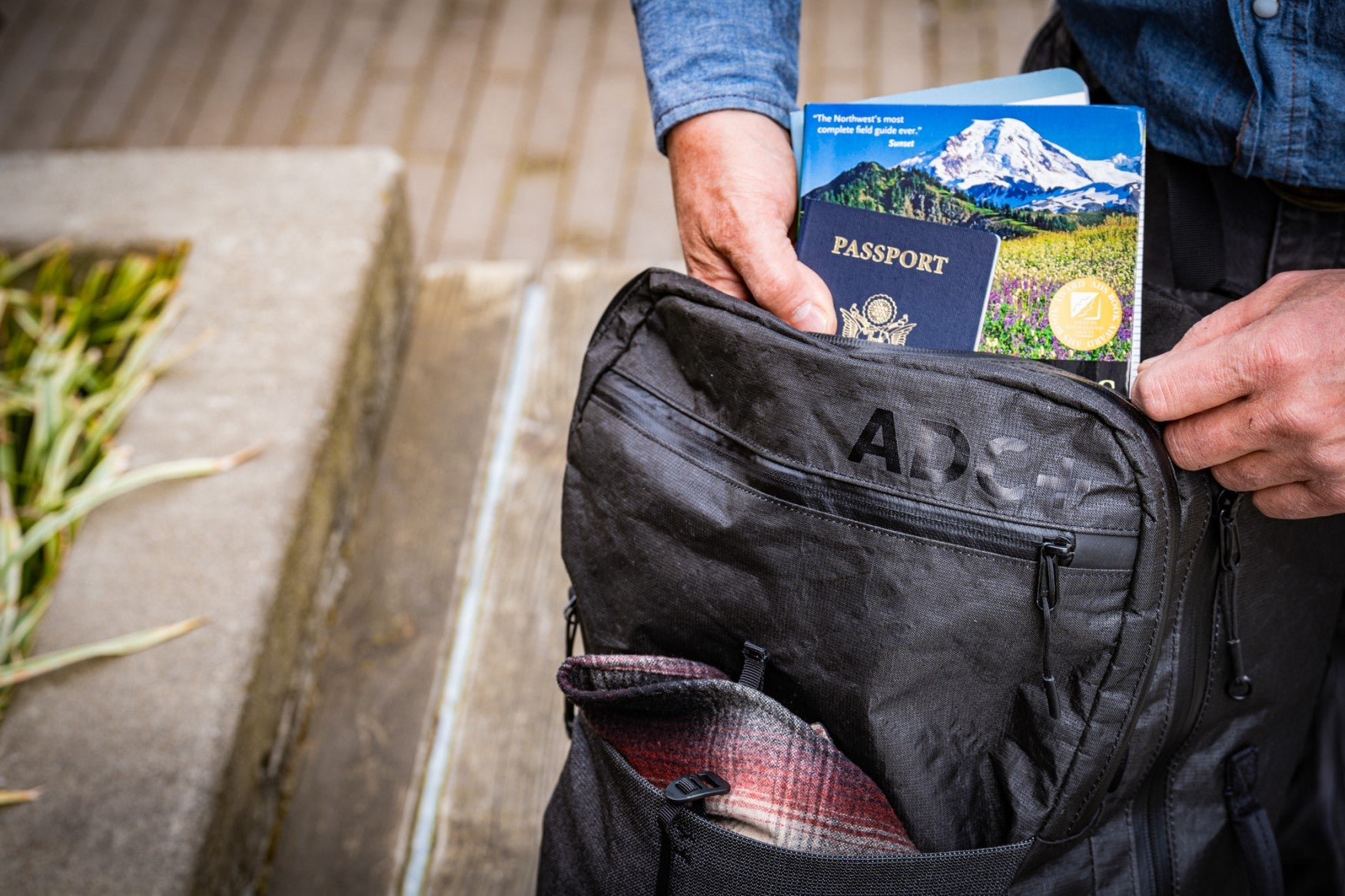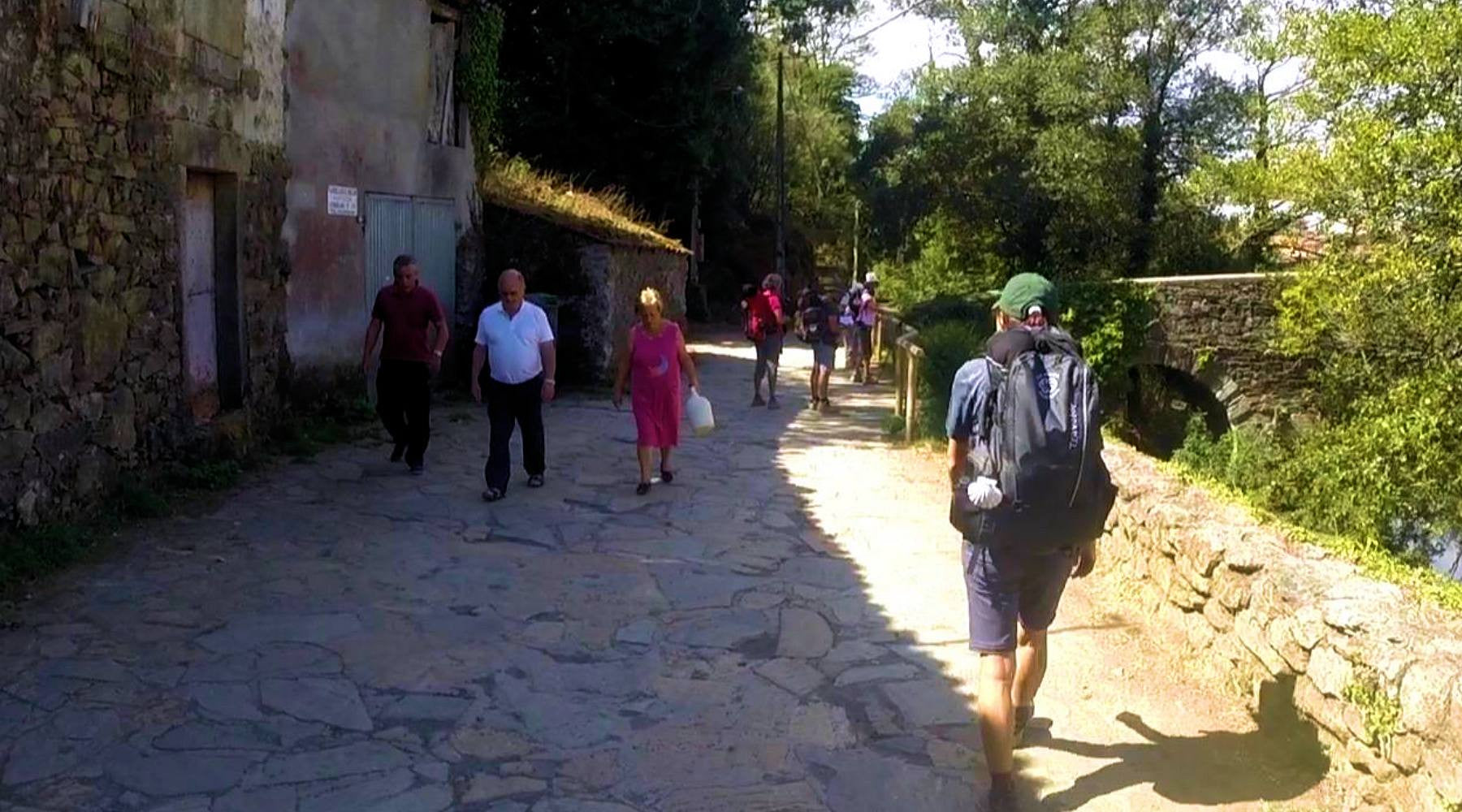These comments were first posted on PCT-L a mailing list for people interested in hiking the Pacific Crest Trail
Tents vs. Tarps - Bivies?
Timothy writes >> You make great gear. Would you recommend a light weight bivy (such as the MLD light soul -sorry, I know it's a competitor) or an epic/e-vent fabric shell on the bag itself under the tarp? If either. <<
Thanks for the complement. I should state up front that personally I'm not all that fond of bivies. So you can use that bias to judge wither my comments apply to your setup.
For those not familiar with bivies we must first clarify them. There are two classes of bivy sacks, the "All Weather" bivy and the "Light Bivy". The All Weather bivy is supposed to fully function on its own under most conditions. While this class of bivies is still used by mountaineers, they have fallen out of favor with backpackers.
The "Light Bivy" came about a number of years ago to provide enhanced protection for your sleeping bag. It found favor with ultralight hikers who liked to carry small tarps. These bivies are designed to perform 4 basic functions; keep side spray off your sleeping bag, act as a ground cloth, provide bug protection and block the wind. Let's look at each of these functions.
- Enhanced water resistance - This is kind of a double edged sword issue. Most really good sleeping bags come with excellent water resistance fabrics. In fact I'd state that in most cases the fabric used in the sleeping bags is better than that used in bivies. Here's a simple test to see how good you sleeping bag is at resisting moisture. Layout your sleeping bag, create a small depression in the shell, pour in a cup of water, then go watch a TV show. When you dump the water, your shell should be dry to the touch and not wetted out. If your bag passes this test, your good to go.
I have a both a sleeping bag and quilt. One with an Epic shell the other with a Quantum shell. Since I mostly cowboy camp, I've woken up numerous times with my bag literally covered with thousands of small dew drops. With both bags, I can just get up and shake off the dew and stuff the bag. I would recommend sleeping under natural cover, if available. It'll eliminate most of the potential of dew formation.
The downside for using bivies to keep outside condensation off your bag is that many of them will form condensation inside of the bivy sack. As you sleep, warm moisture will work its way through your bag. Upon escaping its shell it will condense on the underside of the colder bivy. This kind of negates the whole purpose of the bivy.
Also, a larger tarp that provides better rain protection you can eliminate the need for the bivy. Three ounces of additional tarp weight can eliminate the need for an eight ounce bivy.
- Function as a ground cloth - It's true that they can eliminate the need for a ground cloth. But personally, I want a ground cloth larger than my sleeping bag. I like to keep other items of gear on my ground cloth to keep them off the muddy ground. You can get a pretty good and cheap ground cloth made out of painter plastic that weighs a couple of ounces.
- Provide bug protection - Yes, bivies will keep the creepy crawlies and the mosquitoes at bay. However most bivies have minimal netting. Mosquitoes will still buzz your ears and it's often difficult to keep the netting off your face, where you're still subject to mosquito bites.
For heavy bug season, I prefer a bug tent. There are a number available today that weight no more than a bivy and allow you to at least sit up in a bug free world.
- Wind Block - With the move from sleeping bags to quilts, bivies have increased in popularity. Anyone who's slept in a quilt, soon learns that even a slight movement can sometime bring an unwanted wafting of cold air. So bivies can serve to block these unwanted incursions and give you a more gentle sleep.
I think the problem isn't with the quilt per say. It's with the size of the quilt. When we downsized our tarps to save weight, we downsized it too much so we needed a bivy. The same hold true with quilts. I think it's better to get an oversized quilt that will move with you than to try and fix the problem with a bivy.
Many people have opted to get quilts with sheer bottom panel of fabric to provide a wind block. This will work, however it too has its drawbacks. On hot nights you need to be able to regulate your temperature. Sleeping in a full enclosed tube, it's impossible to pop open a side or toss out a leg to let in some cooler air. In addition most bivy sacks are sized to be just slightly larger than you sleeping bag. With the minimal space, it's difficult to adjust your sleeping bag to cool down.
Bottom line; for me bivies are too often used as a patch to cover a more structural problem with your gear selection. It's better to think through the needs of all your gear than to buy another piece of gear to fill in the holes. In the end, you'll save weight, money and have a better camp setup.
File this one in the "For What It's Worth" bin. Hopefully it's food for thought.
Happy hiking!
-----------------------------
Fallingwater










Leave a comment
This site is protected by hCaptcha and the hCaptcha Privacy Policy and Terms of Service apply.